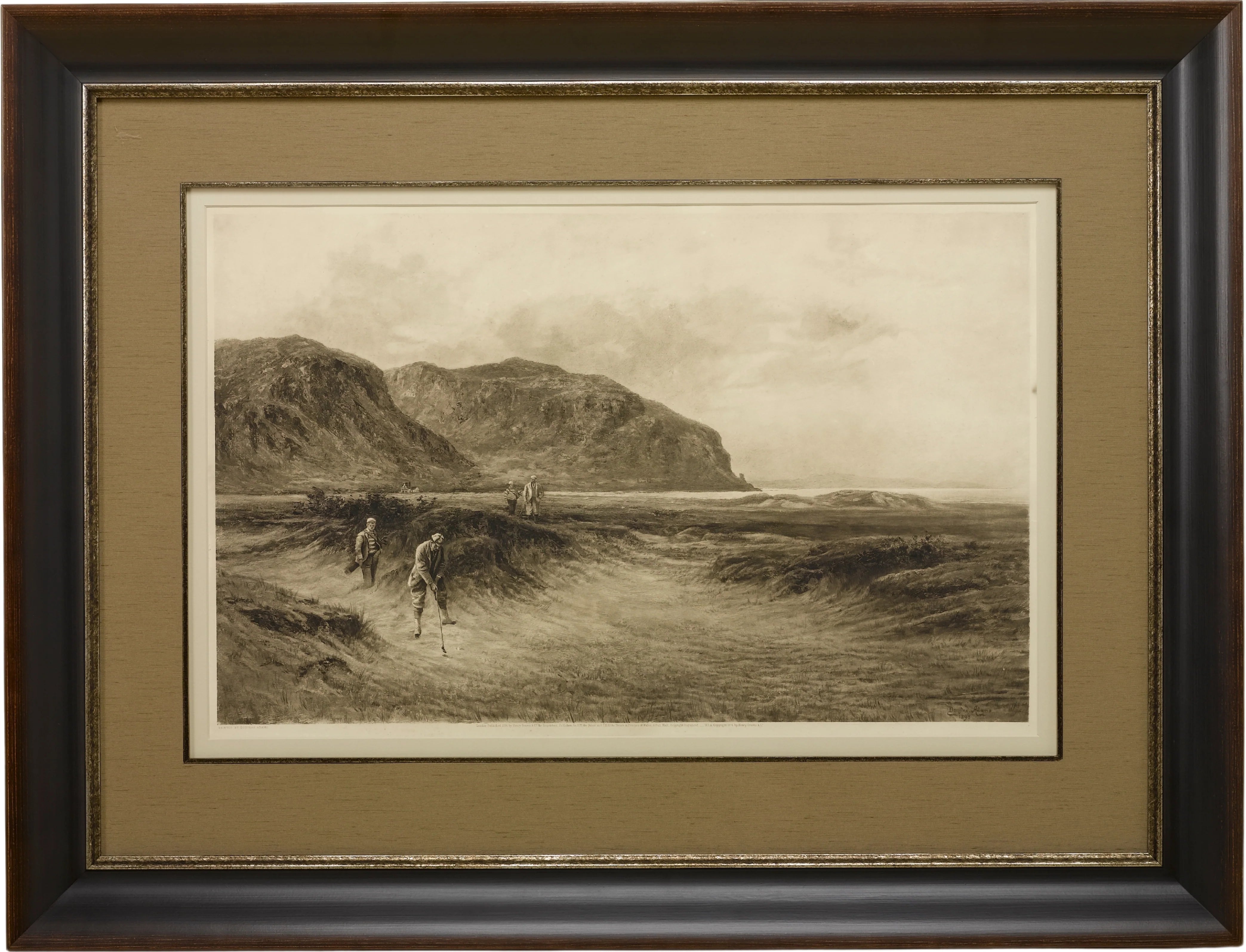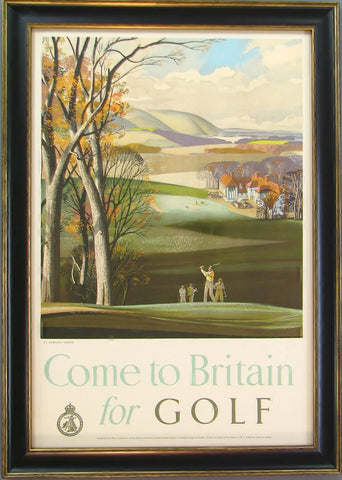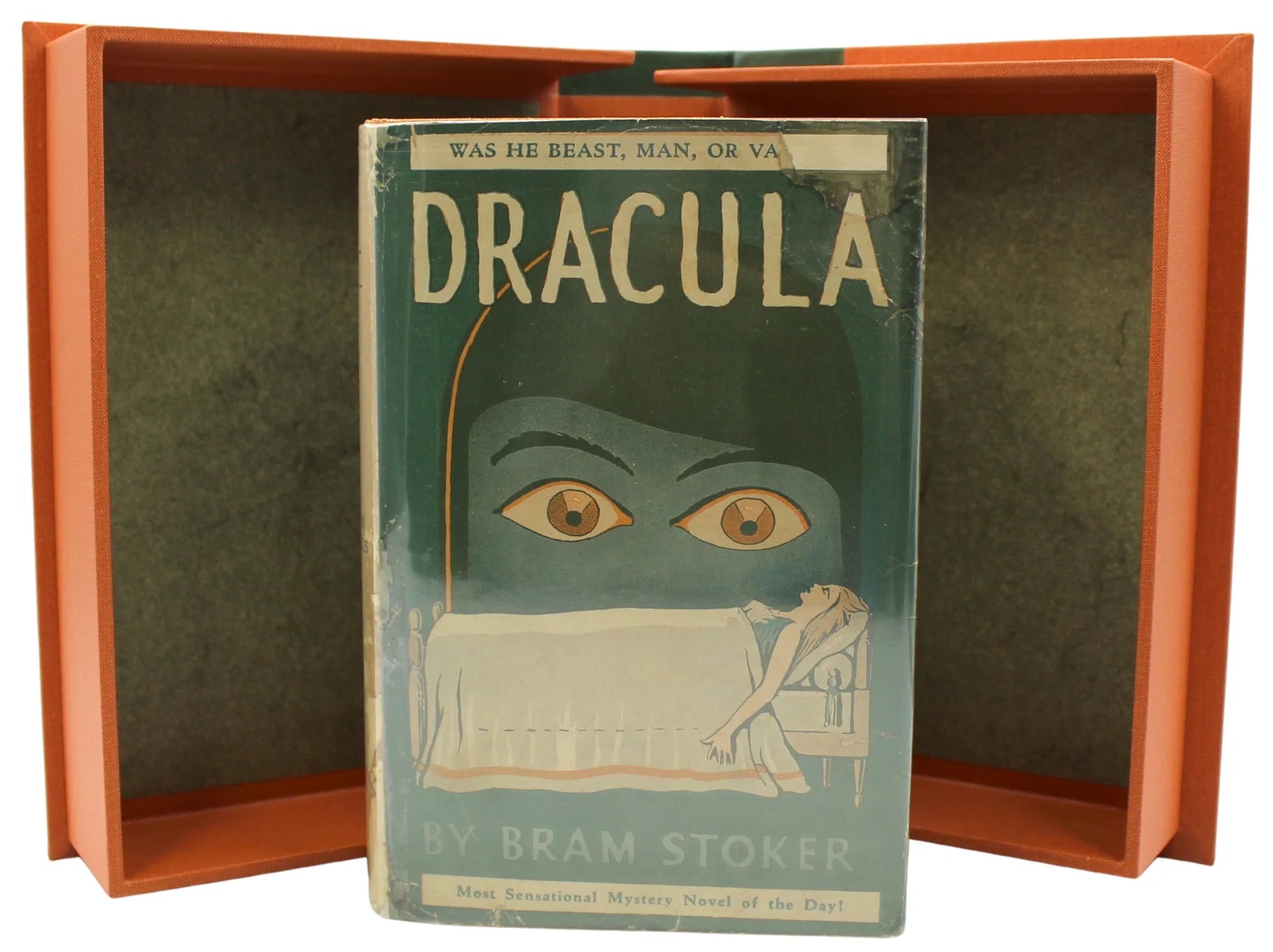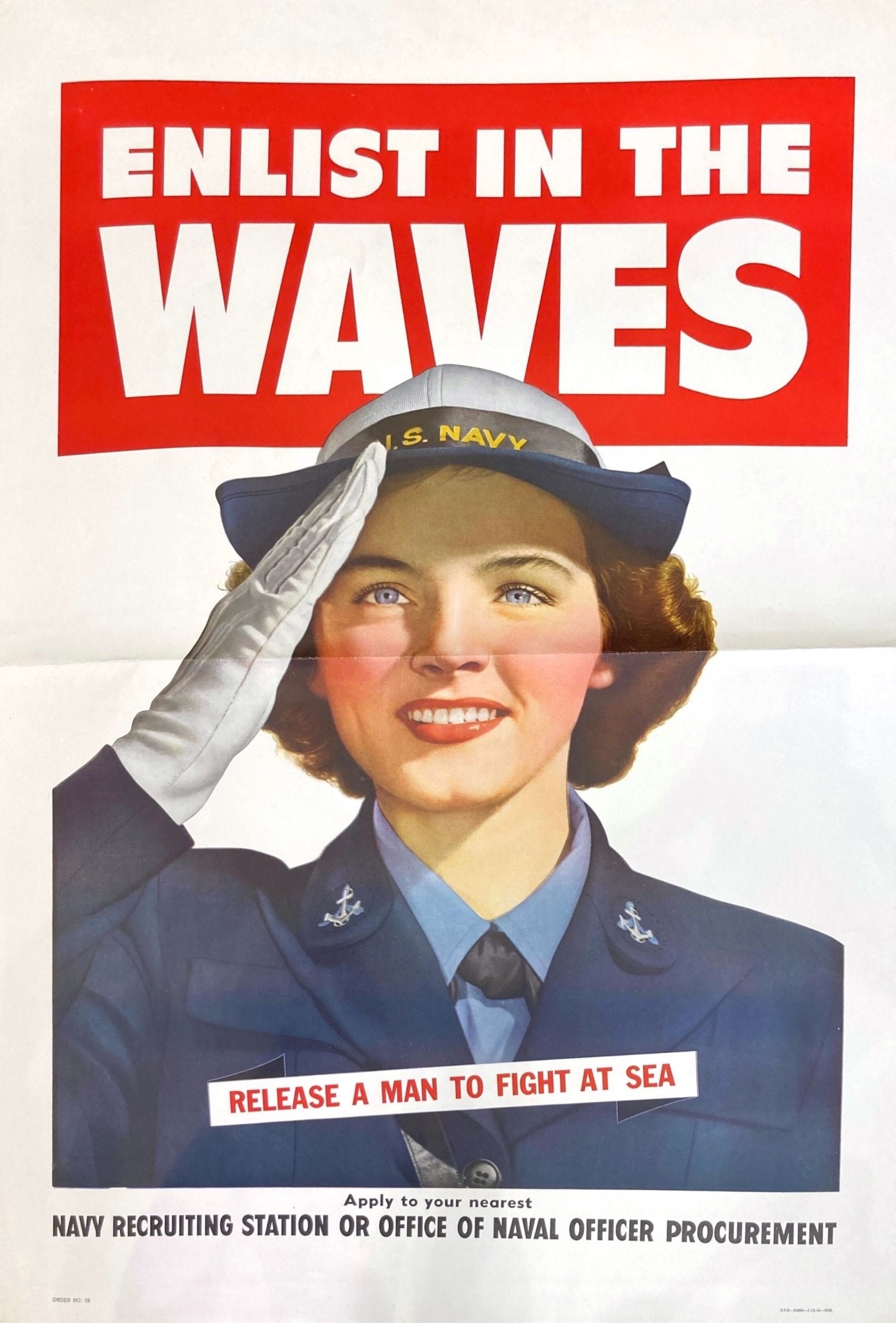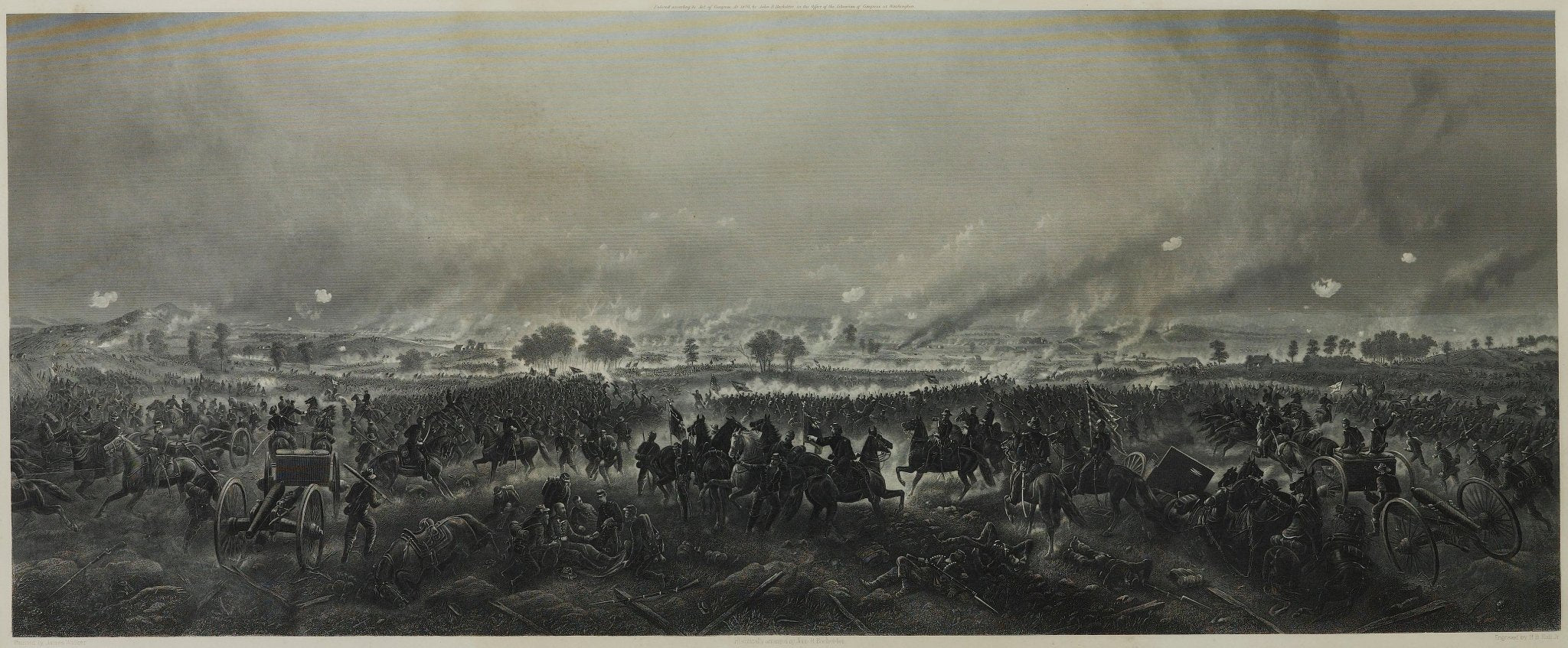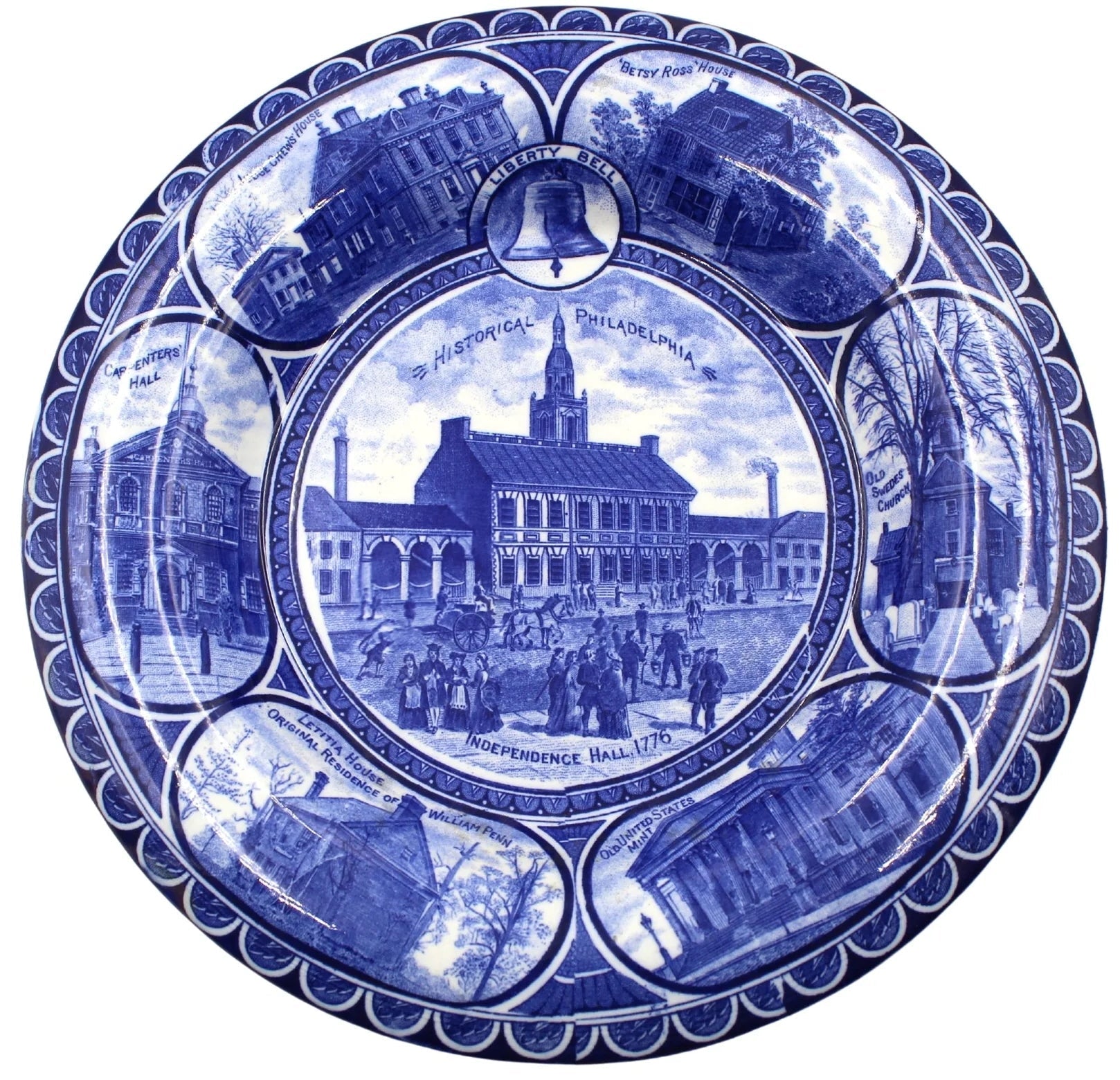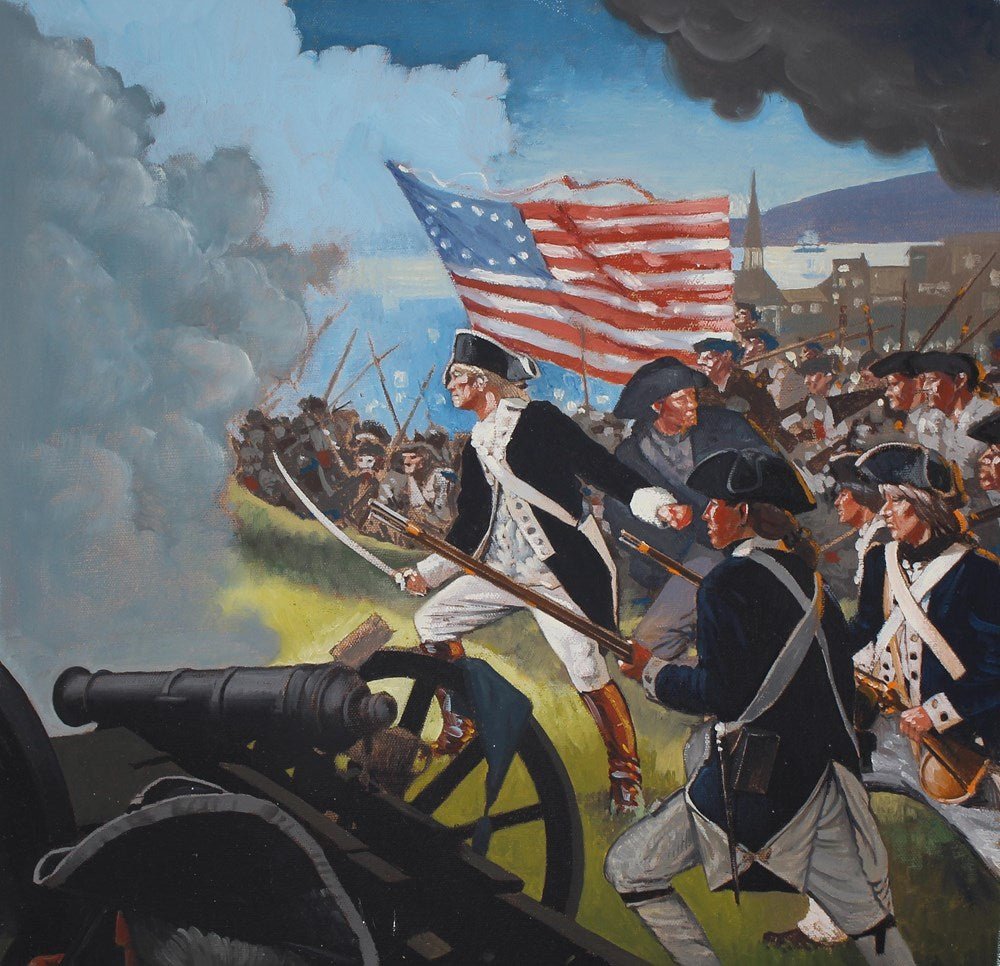19th and 20th Century British Golfing Art
The United Kingdom has a long history of golf. The game was first invented in Scotland during the 15th century. Later in 1744, the first gentleman’s golf club was formed and rules began to formalize. During the 19th century, wherever the rule of Great Britain went, golf soon followed. The sport grew in popularity and certain destinations became known and storied for distinct style of courses.
The popularity of golfing art mirrored the popularity of the game. Prints, paintings, and illustrations of the championship or historic links served to entice players to those iconic courses, as well as highlight the more rugged course designs found in the UK. Britain’s unique bunkers and rough links varied greatly from the carefully manicured courses of the United States, and the sporting art of the late 19th and early 20th century reflects that.
In his 1894 photogravure “A Difficult Bunker,” sporting artist Douglas Adams depicted the Conwy Golf Club in North Wales. While the golfer is focused on his shot in the foreground of the image, the composition opens up to show off the characteristic outline of the hills to the south of the course, part of the Carneddau range and northern extremity of the Snowdonia range. The rugged and natural layout between the 12th and 13th hole make for, as the title and composition implies, a very difficult bunker.

Similarly, consider the color photolithograph by Cecil Aldin, depicting the English golf course Royal North Devon at Westward Ho!. The print depicts golfers on the course’s sixth green. The sixth hole plays along the ocean and has a fairway that is shaped by the natural slopes of all the dunes. The rugged hole is completely exposed to the wind coming off the water, as depicted in blown grasses in the foreground. It is art prints just like this one that helped cement the storied legacy behind these great courses.
Advertisements posters also served to highlight Britain's great golf courses. In this 1952 vintage golf travel poster, entitled “Come to Britain for Golf” by Rowland Hilder, four men play a round of golf in the golden light of Autumn. As the eye is drawn to the background, Hilder’s poster showcases Britain’s rolling hills, varying grasses, with natural dips and challenges in the course. The poster was published by the Travel Association of Great Britain and Northern Ireland to promote Britain as a key golfing destination- unique in its raw and natural beauty.
Looking for more golf antiques? Check out our website for prints, posters, signatures, and more!

